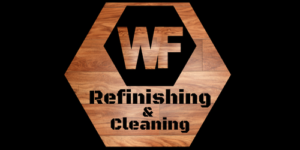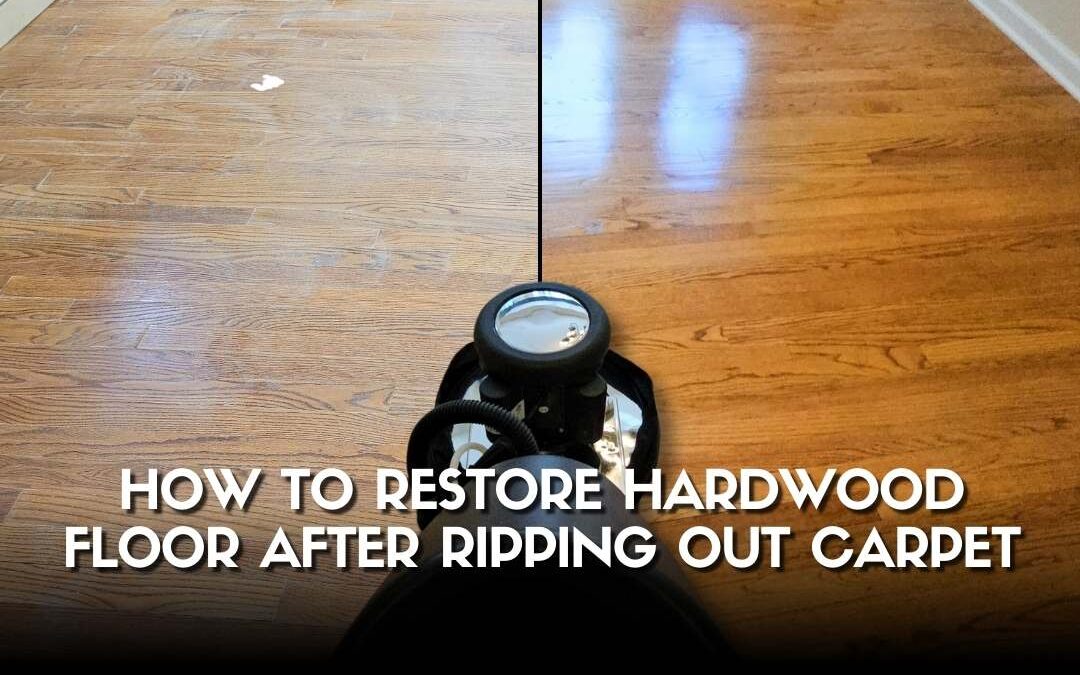Restoring hardwood floor surfaces after ripping out carpet can transform your space. When you remove carpet, you may uncover beautiful hardwood flooring beneath, but it might not be in pristine condition. Here’s a step-by-step guide for homeowners in Summit, NJ, to clean, repair, and refinish hardwood floors for a stunning look.
When you remove carpet, you may uncover beautiful hardwood flooring beneath, but it might not be in pristine condition. Restoring hardwood floor surfaces after ripping out carpet can transform your space. Here’s a step-by-step guide for homeowners in Summit, NJ, to clean, repair, and refinish hardwood floors for a stunning look.
Step 1: Inspect the Hardwood Floor
Before you begin restoring hardwood floor surfaces, inspect the condition of the wood. Check for:
- Stains or discoloration from old spills or adhesives.
- Scratches or gouges caused by carpet tacks or furniture.
- Warping or gaps in the planks due to age or moisture.
This evaluation helps you decide whether cleaning, refinishing, or replacing is necessary.
Step 2: Remove Carpet Residue
Ripping out carpet often leaves residue like staples, nails, and adhesive. Follow these steps:
-
Pull out staples and nails using pliers or a staple remover.
-
Scrape off adhesive with a putty knife. Avoid harsh scraping to prevent damaging the floor.
-
Vacuum thoroughly to remove dust and debris.
This preparation ensures a smooth surface for cleaning or refinishing.
Step 3: Clean the Hardwood Floor
Cleaning is a crucial part of restoring hardwood floor surfaces. Use these methods:
-
Dry Cleaning: Sweep and vacuum to eliminate loose dirt.
-
Deep Cleaning: Use a hardwood floor cleaner to remove grime. Avoid water-based products that can seep into the wood and cause damage.
-
Sticky Residue Removal: Apply mineral spirits or a dedicated adhesive remover for tough spots.
If cleaning alone doesn’t restore your hardwood floor’s shine, move on to refinishing.
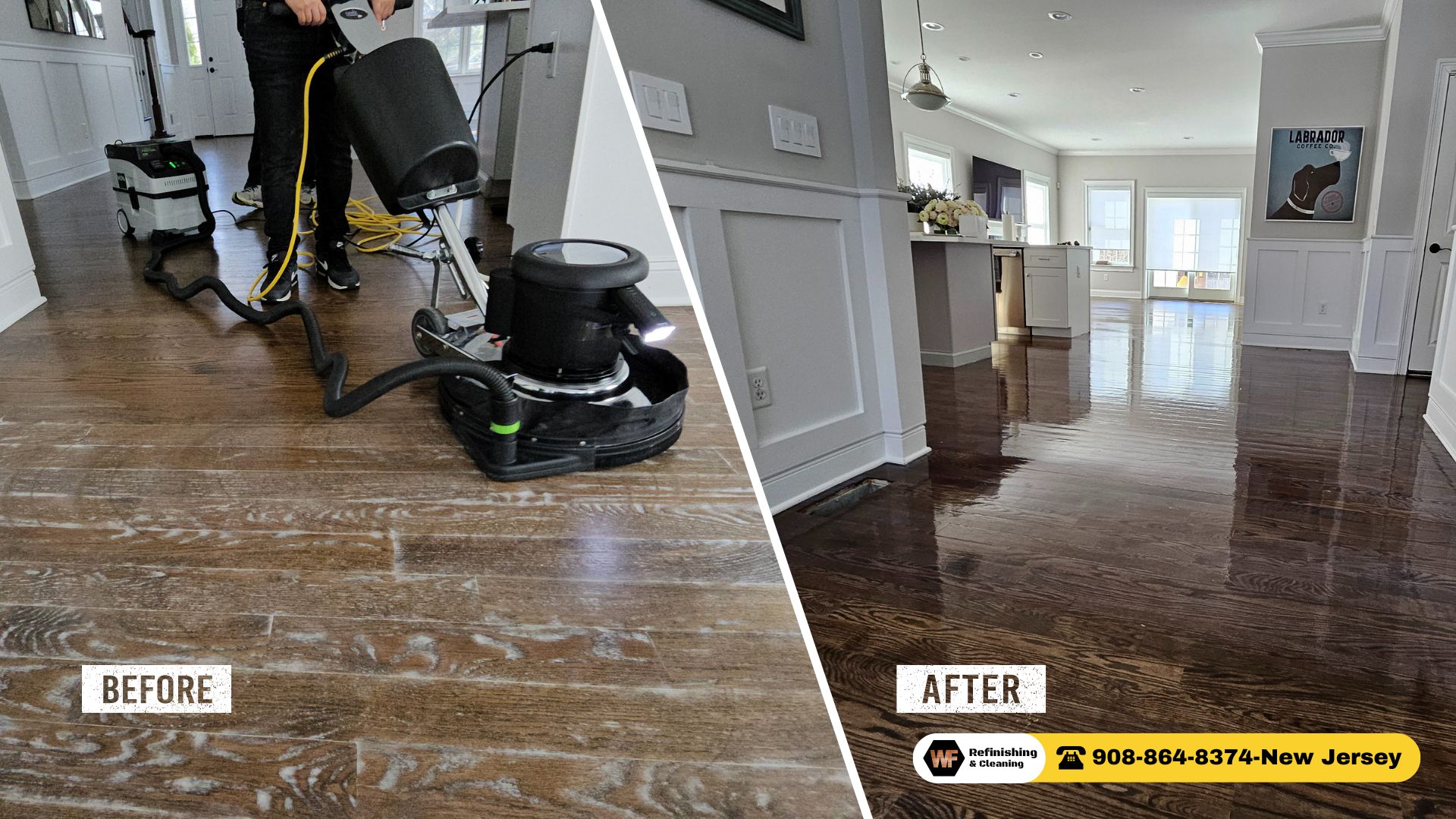
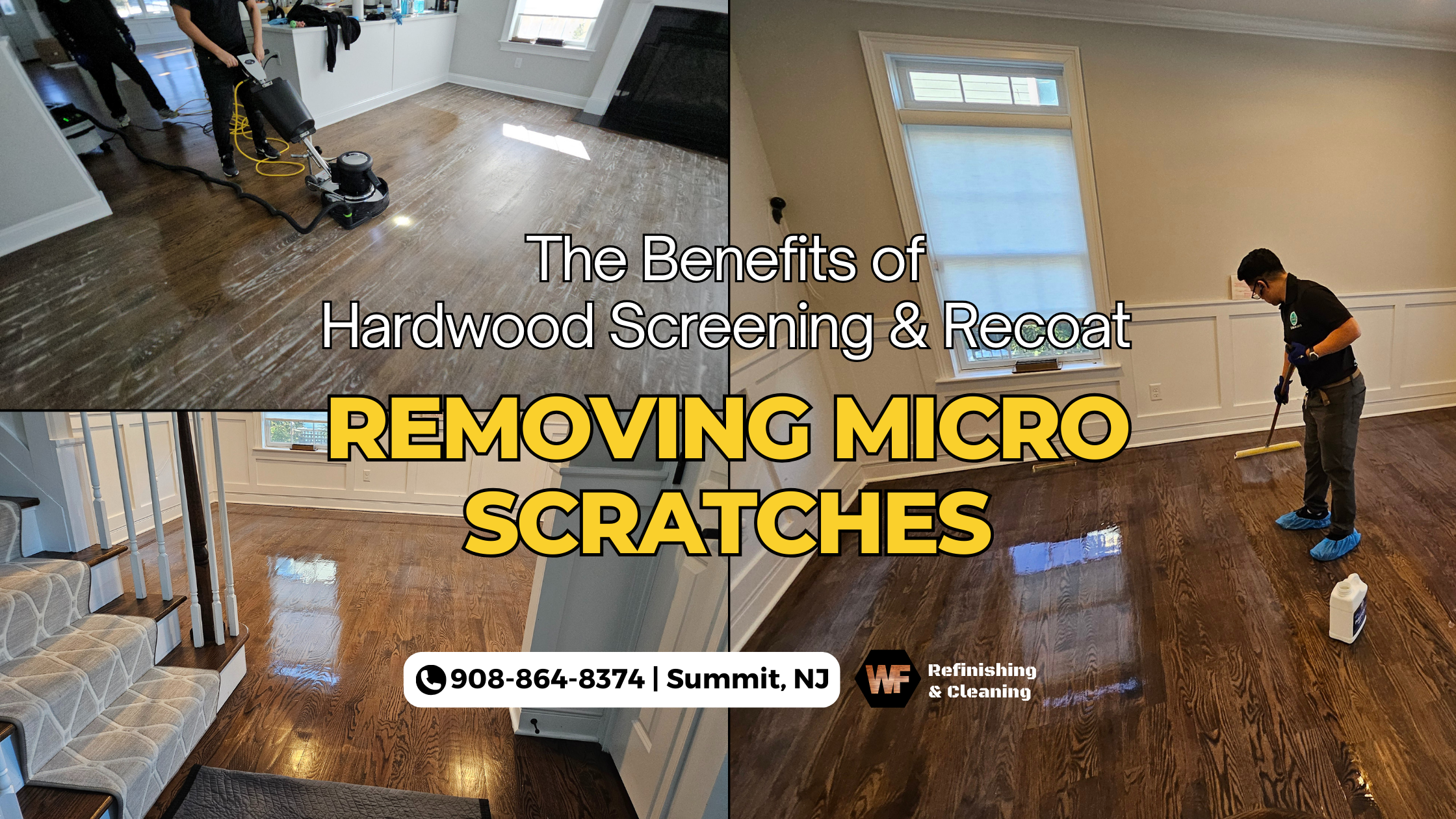
Step 4: Refinish the Hardwood Floor
Refinishing is often necessary to fully restore hardwood floor surfaces. Here are your options:
Option 1: Screen and Recoat
This method is ideal if the floor’s finish is lightly worn but the wood itself is undamaged.
- Lightly sand the surface with a screening pad.
- Apply a fresh coat of polyurethane to restore the shine.
Option 2: Sand and Refinish
For heavily scratched or stained floors, sanding is required.
-
Rent a drum sander to remove the old finish and surface imperfections.
-
Apply stain to enhance or match the floor’s color.
-
Seal the floor with a durable topcoat for long-lasting protection.
Option 3: Professional Refinishing Services
If the damage is extensive or you’re unsure about DIY methods, hiring a professional is the best choice. Experts in Summit, NJ, can restore hardwood floor surfaces to their original beauty with specialized equipment and expertise.
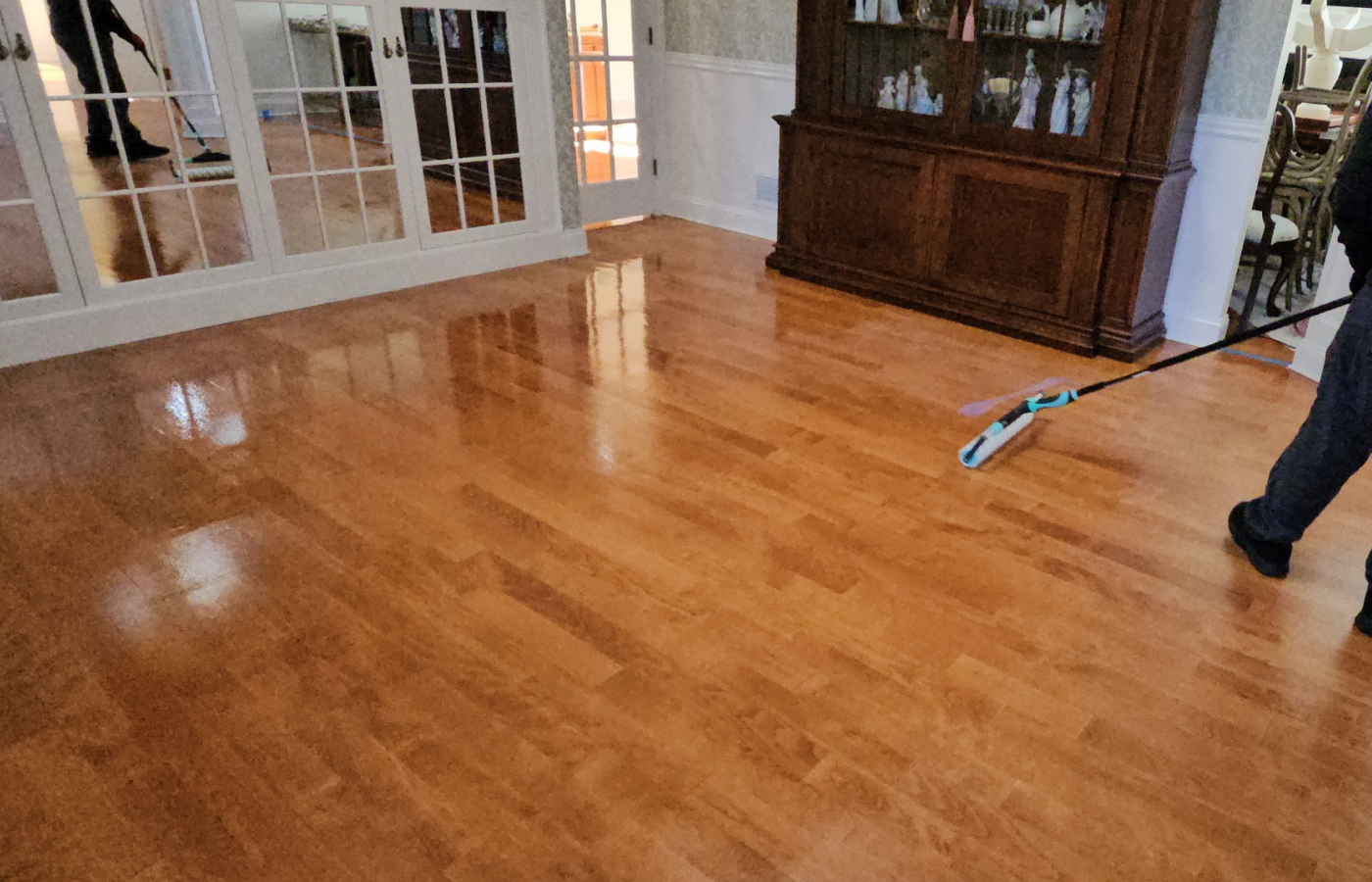
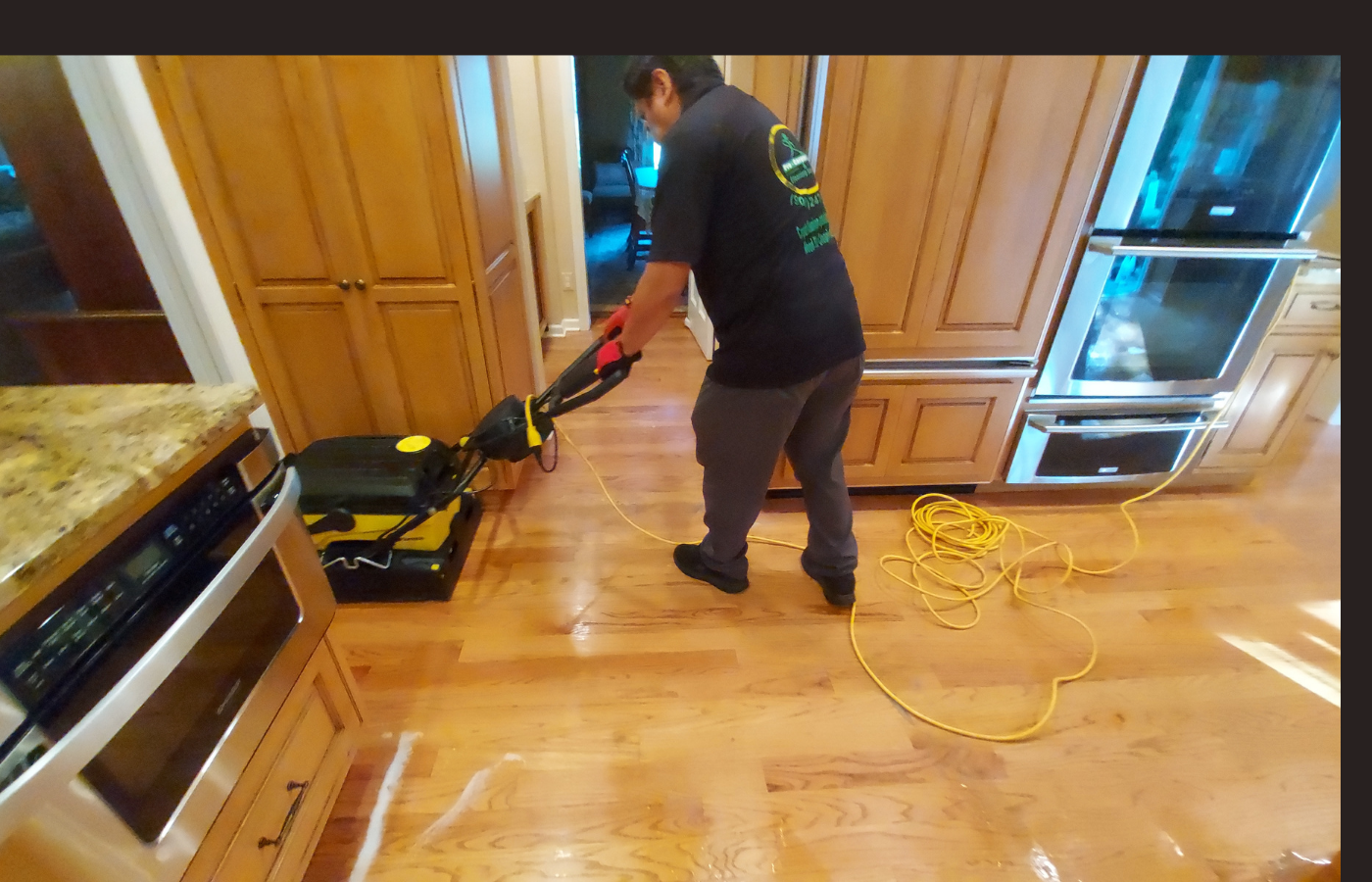
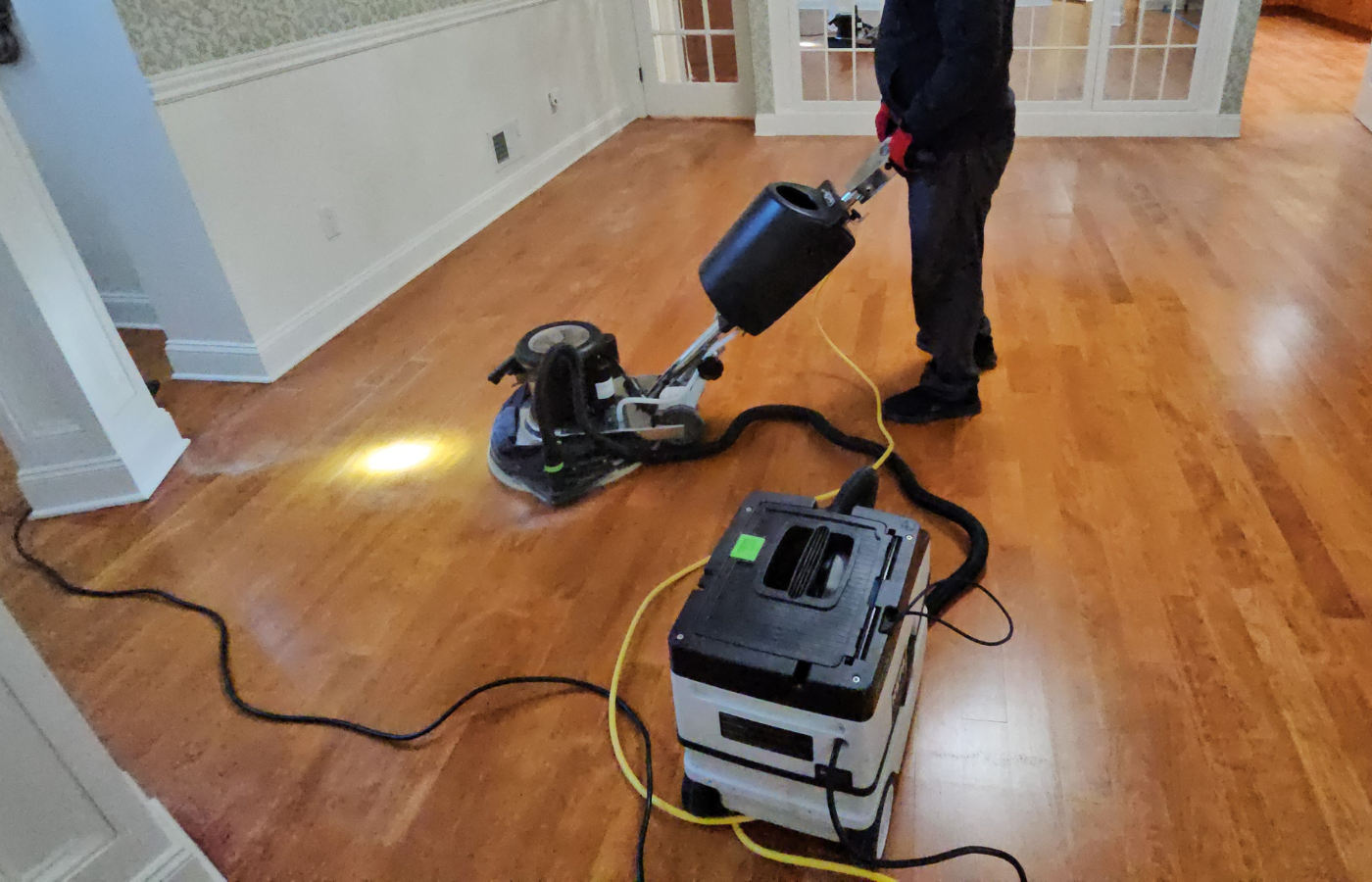
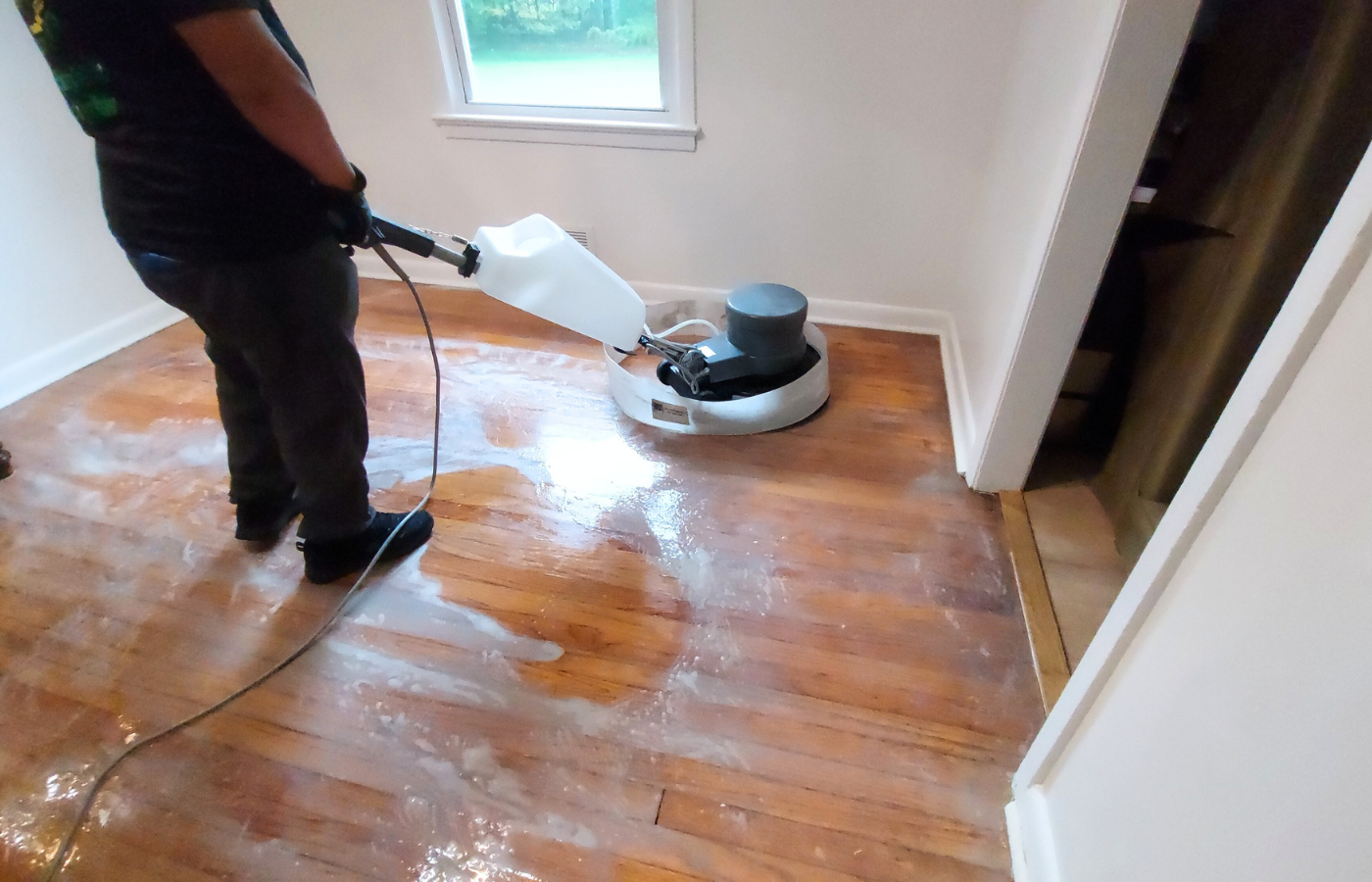
Step 5: Protect Your Restored Hardwood Floor
After restoring your hardwood floor, maintain its beauty with these tips:
-
Use rugs and mats to minimize wear.
-
Clean regularly with a hardwood-safe cleaner.
-
Avoid dragging furniture to prevent scratches.
General Questions
How expensive is Clean & Recoat?
Prices will vary but typically a contractor will charge you less than what they would charge you for sanding and refinishing the floor. Pricing will depend on how much time they spend cleaning a floor, the type of finish they use and the number of applications of finish they make. Get several estimates but pay careful attention to how long they will take, how they will prep the surface and the type of finish they will use. Learn More…
Is this a dusty, smelly process?
The smell of the chemicals used to clean the floors is comparable to typical household cleaners and are not toxic or hazardous. The buffers we use have dust containment systems attached to vacuums to minimize any dust from prep work. We only work with waterborne urethanes that have no offensive odors. Done correctly, Clean & Recoat is the least invasive recoating process on the market today.
How log will a Clean & Recoat last?
With proper care and maintenance and by following a common sense approach to reduce wear and damage, a floor that’s been recoated can give you years of excellent service. I’ve seen floors that I recoated more than ten years ago that are still in very good shape. Most floors that are being recoated will be getting a waterborne finish and these finishes are very good and easily maintained. Learn More…
What is Laminate Flooring?
Laminate flooring is a tongue and groove interlocking flooring system that comes in either planks or squares. All of these floors have a wear layer, a decorative print film layer, an inner core structure, and some type of backing support layer — usually melamine. The print film layer is either fused or glued to the inner core. The print film can be a photo of any real floor. The earlayer is applied to the decorative print layer to protect the pattern. Melamine resins are the main component of the wearlayer. The melamine surface gets its incredible durability from aluminum oxide. Aluminum oxide is almost as hard as diamonds and provides unsurpassed wear and stain resistance. Learn More…
What is Engineered Flooring?
Engineered flooring is produced by bonding three or more layers of wood. The crossing of grain direction within the boards makes this a very dimensionally stable product able to resist nearly all expansion and shrinkage from normal moisture changes. This is one primary feature that makes it suitable for use directly on concrete and below-grade application. Learn More…
Will my floor age or change color?
Yes. You can expect to see shade differences in your floor over time. The cause is usually from exposure to the ultra-violet rays of the sun, whether direct or indirect. This color change will be more noticeable in lighter colors, which will darken over time. In addition, certain species like Brazilian cherry, will naturally darken over the years. These changes are due to the natural characteristics of wood and are not covered by most manufacturers’ warranties.
What is Custom Finishing?
Sanding and refinishing performed to individual specifications. Custom finishing of wood floors is performed in the home on the completely installed new floor, or to refurbish a previously finished floor. Custom finishing permits the owner to select from a full range of stains, sheens and colors.
Floor Cleaning Topics:
- Steam Carpet Cleaning -Summit NJ
- How to dry carpet after cleaning
- How to get rid of odor in carpets
- Basement water damage -steam carpet cleaning
- Lear how to clean wood floor
- How often should I clean my carpet?
- Best Homemade carpet cleaner
- Hotel Carpet Cleaning
- Our Expertise in High-Traffic Areas ( Hotels, Apartments buildings…)
- Expert Commercial Carpet Cleaning Services

